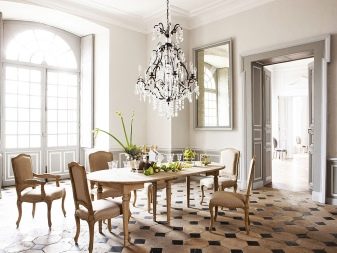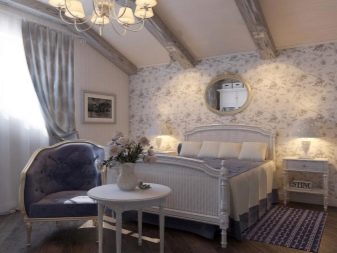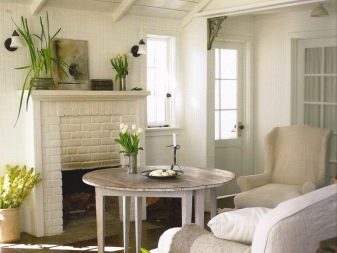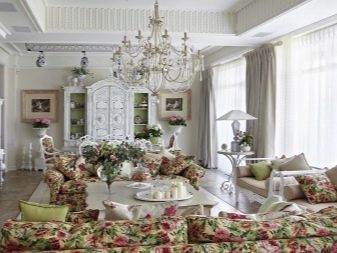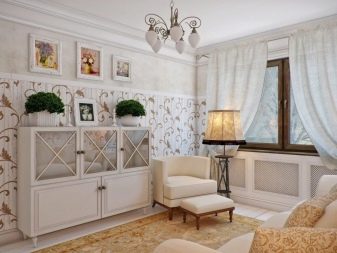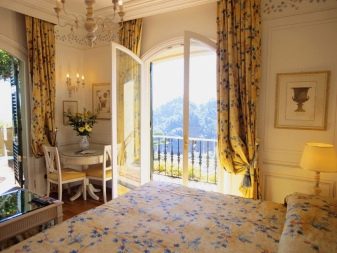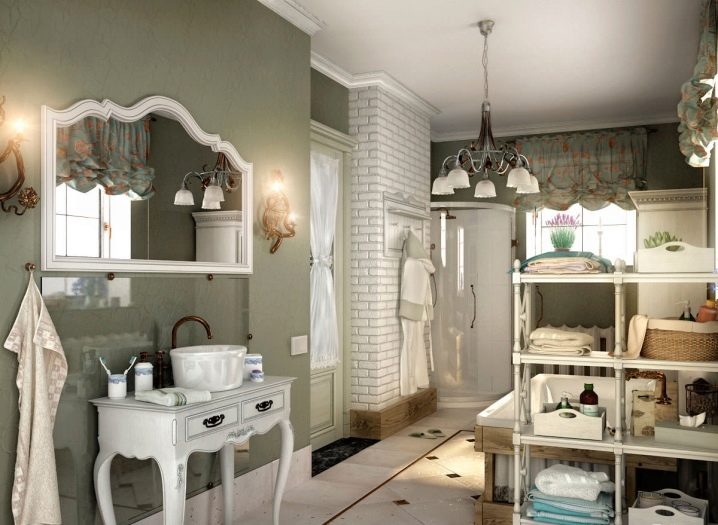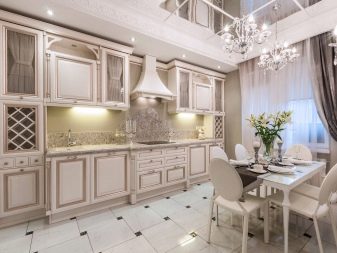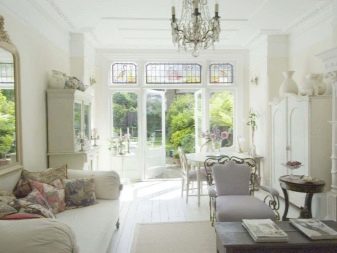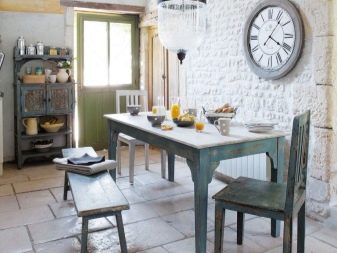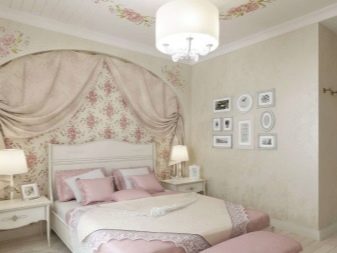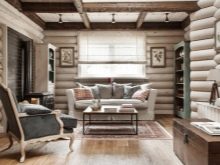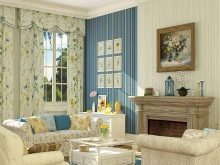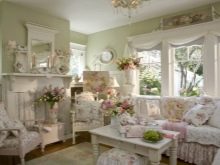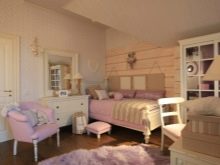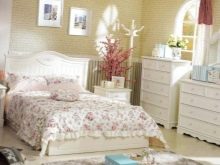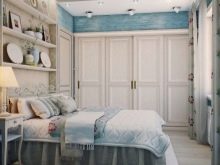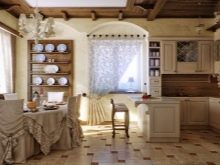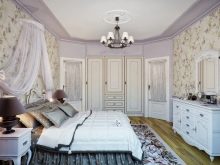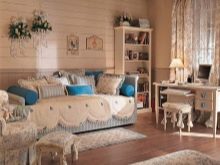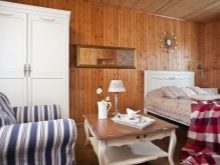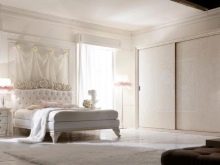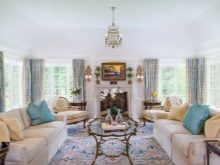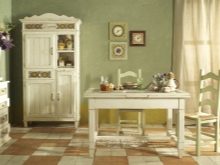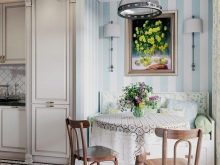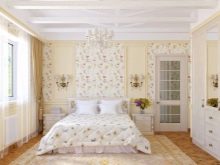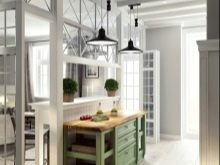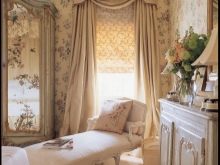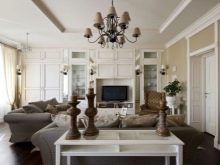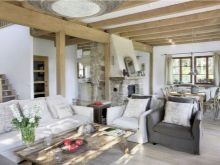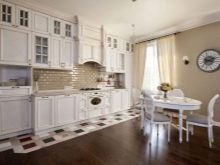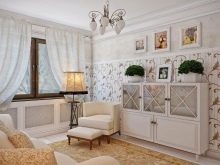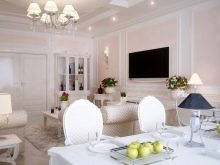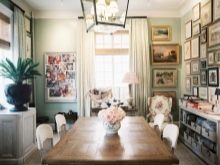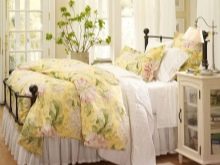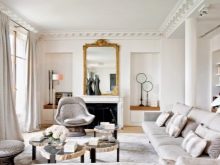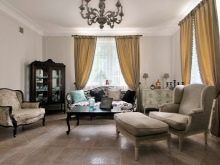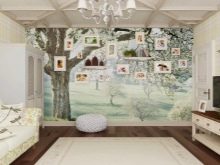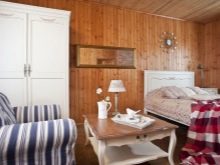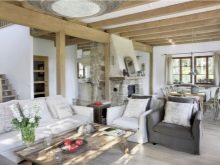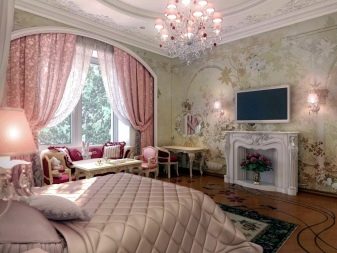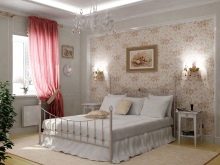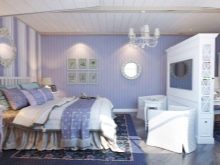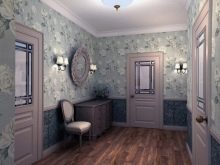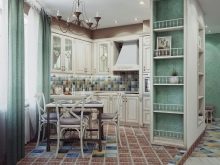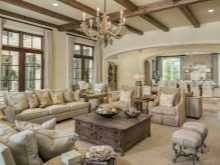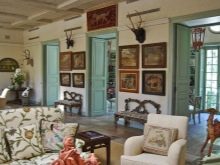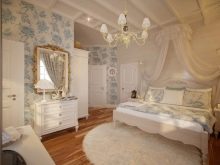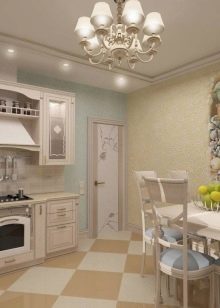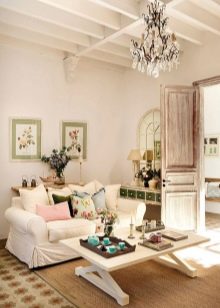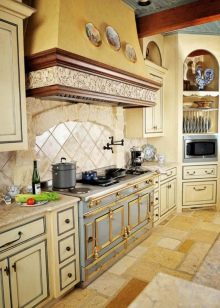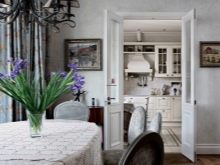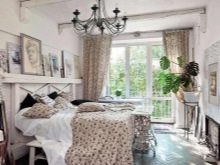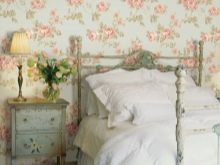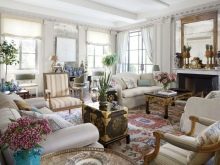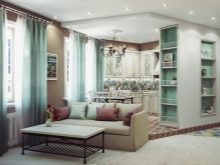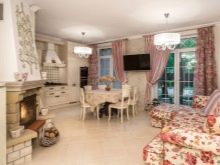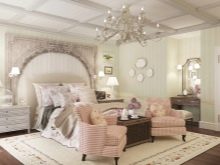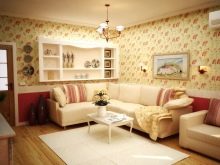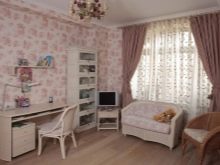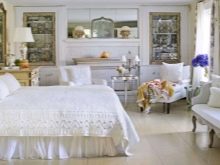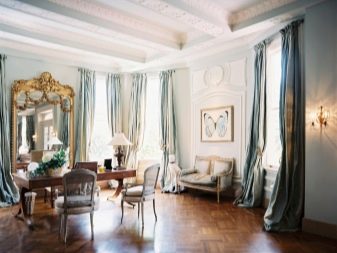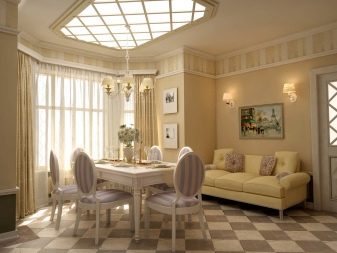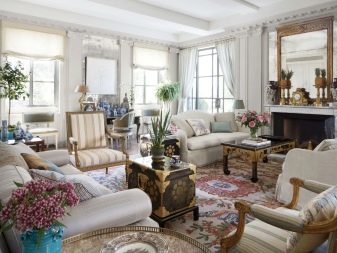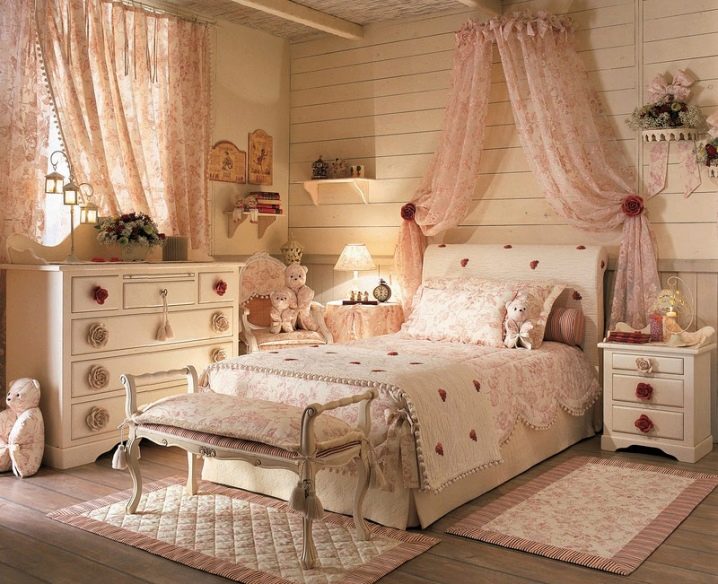Romance of Provence: French-style apartment interior
Provence is a corner of France of unearthly beauty, where the sun always shines brightly, the smooth surface of the warm Mediterranean sea caresses, fragrant lavender aromas hidden in the bushes of the vine miniature villages. The interiors in the style of Provence are just as gentle, not fanciful, provincial, with exquisitely refined antiquities.
A bit of history
They say rightly: being determines consciousness. From the life of the 17th century French village, Provence style originates - this is the same country music, but with an imitation of the south-east of France. He inherited his name from the name of the region of the same name in the country. Unlike the English traditions of country music, it respectfully and carefully preserves national and ethnic features.
This style began to emerge from the depths of a rural measured life, full of labor, inextricably linked with the amazing nature of this region.Respecting themselves, the provincial residents tried to create an environment in their homes for a good rest after hard working days: comfortable, creative, practical, without excesses and rich details in the interior, but with a hint of elegance and delicate taste.
At this time, the financial position of the petty bourgeoisie and intellectuals improved, and whole families of doctors, teachers, lawyers and industrialists wanted to have family estates in the province. With particular comfort and grace, they began to equip their rural estates, taking care of maximum home comfort and an atmosphere that is entirely conducive to recreation.
Thus arose the style of French country or Provence - "province" - which has become a wonderful alternative to the well-trained urban classicism.
In the nineteenth century, this style gained deserved popularity throughout Europe, and the craving for lightness and harmony with nature encompassed all spheres of life in France of that time. The Cote d'Azur (the so-called French Riviera) was rightly considered to be its muse, Pablo Picasso and Henri Matisse, Cezanne and Honore de Balzac, Van Gogh and Marc Chagall. To this day, the creative elite stretches to these places, and the Provence style beats records in relevance and popularity.
Character traits
French country is a tandem of rustic simplicity and noble sophistication, features of which:
- The simplicity and naturalness of life; pompousness and pretentiousness of the Baroque or too modern modernist trends are unacceptable for the style. The special charm of Provence is its uncomplicated nature, proximity to nature, some archaic and long-established lifestyle. The interior in this spirit is capable of transferring us to romantic France, where the legendary heroes of A. Dumas were living, making friends, fighting and falling in love.
- Gentle pastel shades predominate: white, beige, milky, ocher, light yellow, lavender, olive. All colors seemed to fade in the sun and slightly yellow with old age.
- Use in the design of natural materials and fabrics: wood, stone, metal, porcelain, ceramics, linen and cotton. Furniture and accessories are slightly worn, with the effect of antiquity.
- The room in the spirit of the French Mediterranean is always filled with sunshine and light.
- The decor in the Provencal style is a handmade soulful surroundings, family-friendly little things, funny little things miraculously found at a flea market, and memorable knick-knacks brought from travels.It is not customary to hide the dishes and other utensils in the chest of drawers, they put it on the open shelves as expensive souvenirs.
- In the interior there is a feeling of warmth and home comfort.
- An indispensable attribute of Provence is the fireplace or its skillful imitation.
- The abundance of textiles - it is one of the main decorative materials. The motif is dominated by floral motifs, geometric lines in the form of stripes and cells. Fabrics are designed to reflect the national flavor of the French province.
To embody the traditional Provencal interior, as already mentioned, mainly natural fabrics and natural materials with a touch of antiquity are used.
Walls
For the style of the French countryside, wallcovering with plaster is predominantly white. It is great if it is textured, with slight scuffs and irregularities. To create the effect of a natural provincial coating, you can resort to decorative plaster.
Another good option facing walls - upholstered wooden consoles. For them, a muted pastel palette or a natural natural shade.It is not recommended to tamper with an array of all the walls in the room, and even more so in the whole apartment, tandem panels and plaster would be preferable.
Wallpapers in this direction are rare “guests”, although they can also be used in decoration, but not in a single color scheme. In Provence there is always a place for a floral ornament, a tasteful pattern of weaves of olive twigs or inflorescences of delicate lavender on the wall coverings will be most welcome.
Floor
A floor covering within the same room can represent a mix of several materials. Often this technique is used for studio apartments or multi-room apartments, where the living room is combined with the kitchen. The preference, as already found out, is given to wooden boards and a tile. Therefore, we exclude laminate, linoleum, carpet, parquet and other artificial materials. Instead of them, we use a solid-wood plank, and if the budget is limited, you can get along with a castle floorboard, but a single-lane option is preferable.
The color design is welcome light, organically fit into the interior of the Provencal apartment floor beige and coffee palette.The effect of scuffing and light patina of antiquity does not interfere with floor materials at all. Often used to finish the floor unpainted wood. The natural shade adds warmth and comfort to the interior.
Ceiling
Provence is alien to artificial and modern technological materials. This prevents the creation of a true design in this style. Therefore, stretch ceilings are not suitable for the design of the ceiling space in this direction; it is difficult to imagine a glossy smooth surface in a house where ancient things are kept and family traditions are preserved. For the same reason, it is worth refusing to use complex drywall constructions.
Details in such an interior radiate simplicity, so the ceiling is whitened or painted in white paint, decorative plaster is applied, and stucco decorations are used.
Decorative ceiling beams will help to emphasize the spirit of the French wooden house. As a material for them use natural wood or high-quality imitation. The color of the beams varies from a dark contrast to a hue whitened to the color of the ceiling.
We select furniture
Provence's business card is furniture that combines useful functionality and elegance. It is she who sets the mood and color. Traditionally, only natural materials were used for its manufacture: solid wood, rattan, and reed. Dressers and cupboards with legs, chairs with carved elements are the classic French country furniture. Such furniture was simple and often antique, with a characteristic touch of antiquity.
Nowadays, both real antiques and artificially aged articles from MDF consoles with characteristic cracks, chips, scuffs can be used in the Provencal interior. Vintage - not the only requirement, the furniture must be above all good and strong.
Not alien to projects in the spirit of Provence and forged items. The use of decorative forging products can revive a room, make it elegant and attractive, because the pattern of metal rods looks stylish and dynamic.
Among the options for wrought-iron furniture: ornate long couches, intricate coffee tables, openwork chairs, elegant shelves and shelves.Forging should be fanciful and light, rough and massive objects are not the place.
Textiles matter
Textiles made from natural linen, cotton, chintz and wool will help emphasize the atmosphere of the French province. Floral and floral patterns of fabrics reflect all the splendor of the surrounding nature. Blooming buds of roses and wild rose, lavender inflorescences, bouquets of small wildflowers resemble a real wonderful garden, as if moved into a room.
Floral motifs are often animated by butterflies and birds - symbols of love and well-being. Flower arrangements, lace and ruffles are everywhere - on pillows, bedspreads, napkins and handmade tablecloths.
Special attention in textiles Provence deserve curtains. Ideal curtains in the spirit of the French countryside are airy fabrics and translucent curtains in the pale palette of light-colored watercolors. Heavy drapes of dark colors and complex draperies are not relevant here. It is quite appropriate to build the upper part and interceptions on the sides, long curtains on the floor are decorated with a wide edging and soft lambrequin. Packing can be varied: floristic motifs, a delicate cage or a strip, but plain fabrics are considered a win-win option.
It will look great decor items, made with your own hands: embroidered with love pillows, dumachki, decorated with tassels seat mats on the chairs, kitchen tacks. But here it is better not to overdo it and stick to the general style of the interior.
Ruffles and embroidery are often used for bed linen.
The color palette of textiles conveys all the shades of a blooming meadow - lavender, pink, olive and light green, ocher and yellow, light blue.
Important nuances
Designers are advised to remember some points when finishing the room in the spirit of Provençal.
- Provence is a multi-layered style full of various details. You should not structure it, try to give it orderliness. A traditional premise in the spirit of the French province is never perfect. To create a real Provencal atmosphere, sometimes there is not enough of a small trifle: a wicker basket with knitting, from which a ball rolled out, or a faded pick-up ribbon on the curtain.
- Green plants give a special flavor to the interior. If the window sill allows, fragrant herbs can be planted in narrow wooden boxes, for example, basil or rosemary.Fresh greens will not only decorate the space and please with pleasant aromas, but also come in handy in the preparation of exquisite European dishes. Herbs and fruits will look spectacular in the interior even in a dried form, introducing a special spirit of antiquity.
Spring bulbous flowers in pots are also well suited for this style. Decorating the room with fresh hyacinths and tulips is a very good solution.
- Minimalism and restraint in the details never accompany the Provencal interior. There is no need to be afraid of accessories, sometimes they set the desired rhythm. Vintage decoupage jewelry box for tea, an old copper coffee pot bought at a flea market - any thing that has been carefully and tastefully selected, can be an important finishing touch to the interior composition.
Provence does not tend to hide household items. The integral attributes of the French style are ceramic ware painted with bright rustic motifs, multi-colored spice jars, bottles of oils lovingly placed on open wooden shelves.
Design Ideas and Examples
Provence is great for the situation of a large country house, and for the interior of a standard two-bedroom apartment. Even the owner of a modest living space can afford repairs in the spirit of old France. In this direction, you can arrange a separate room, if its owner is close in spirit to the atmosphere of the Mediterranean.
For the embodiment of the spirit of Provencal in the bedroom of a young girl or child, you can choose light beige finishing materials and simple laconic ivory furniture. And the Provencal spirit is emphasized by the abundance of textiles in a soft pink gamut.
What materials to use?
Flying translucent curtains, girly bows on the bedspread, touching pillows in the form of cubs, delicate tassels that fasten the seat of the stools, traditional floral motifs in the decor - something that any woman will appreciate.
The crown of the interior can be decorated in the same spirit a canopy of delicate tulle, stuck on the sides with decorative roses.
How to decorate the interior of the apartment in the French style, see the following video.


